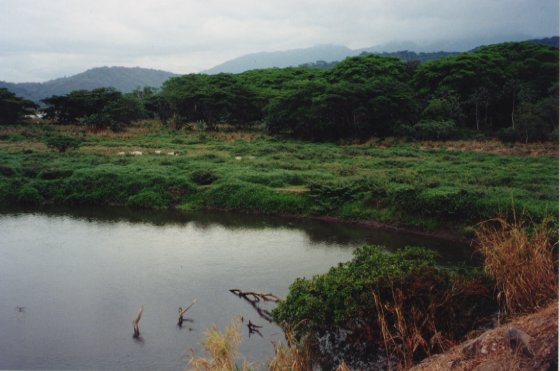
 |
Carara Biological Reserve is a protected 11,750 acre low land tropical forest. |
|
The jungle seems so dense that it takes awhile before you stop looking at the mass and start to notice individual things, for example, the ants. |
Here our naturalist guide is talking about this 5" wide river of leaf cutter ants busy carrying bits of leaves to their underground nest. |
 |
An iguana eating leaves. I saw lots of these, some perhaps 30" long. |
| Taking pictures of really big trees in the jungle is essentially impossible with a still camera. Presumably with a video camera, I could have panned up the trunk. | 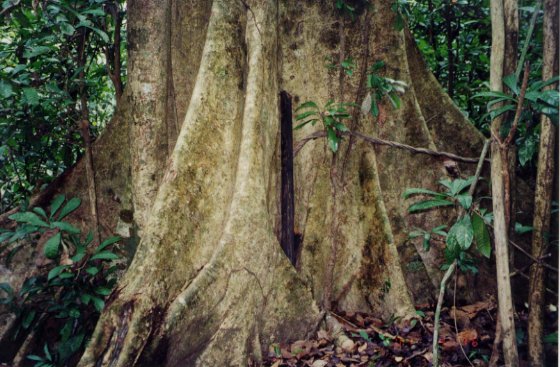 |
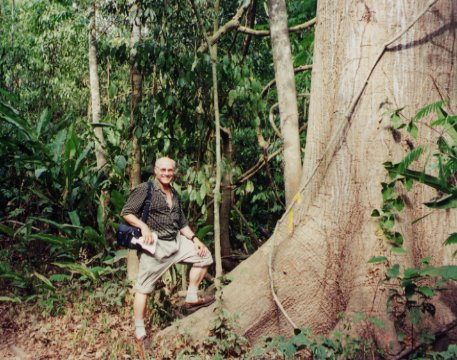 |
The humidity was so high that raincoats are useless. After the daily rain the humidity seems to drop a bit and you go from being extremely uncomfortable to just plain uncomfortable. |
|
|
|
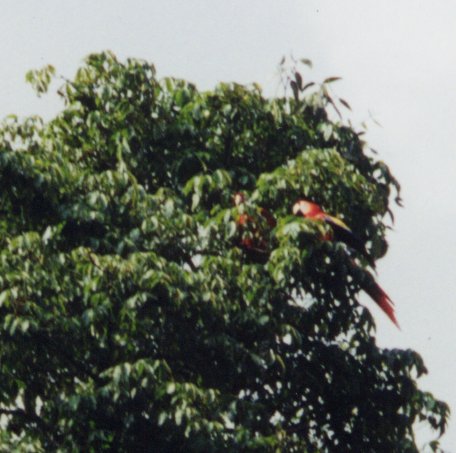 |
We were fortunate to see Scarlet Macaws in the tree top. |
|
Scarlet Macaw in flight
|
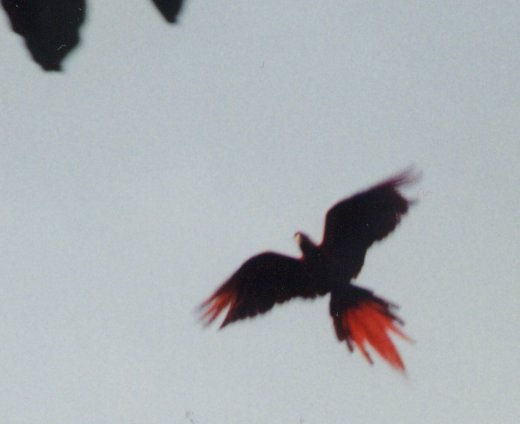 |
 |
We saw a group of monkeys leaping through the branches from one tree to the next. |
After walking through the jungle, we came to a swampy area
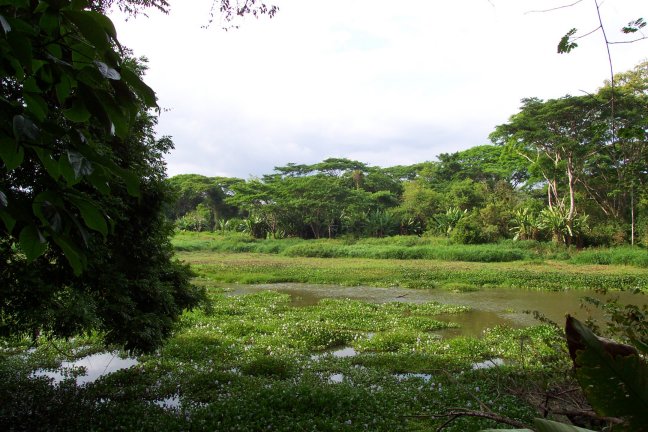
Here is the stereotypical creature in jungle swamps. This guy is perhaps 15' long.
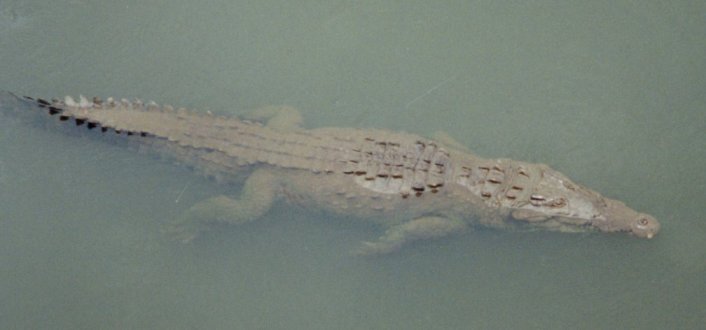
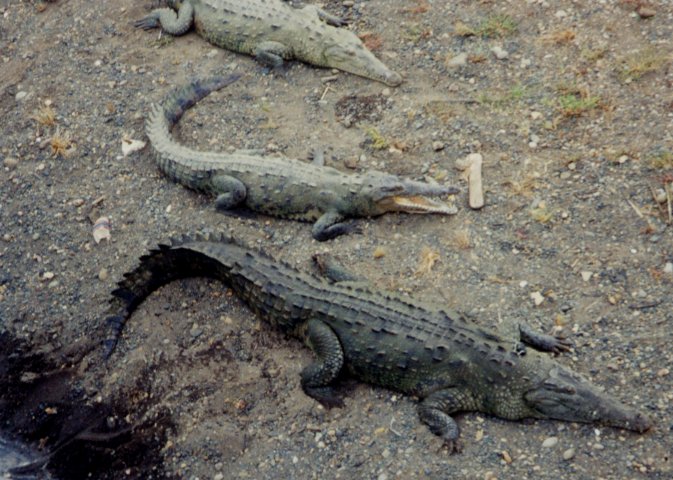
We were told the crocodiles crawl up on the bank and lay in the sun to raise their body temperatures to help digest what they have eaten.
Another creature that likes the water is the Anhinga also common in the southeastern US.
|
The Bow Bill Heron is a South American bird that migrates to Costa Rica to nest. A nest with two white eggs is visible in the lower right corner. |
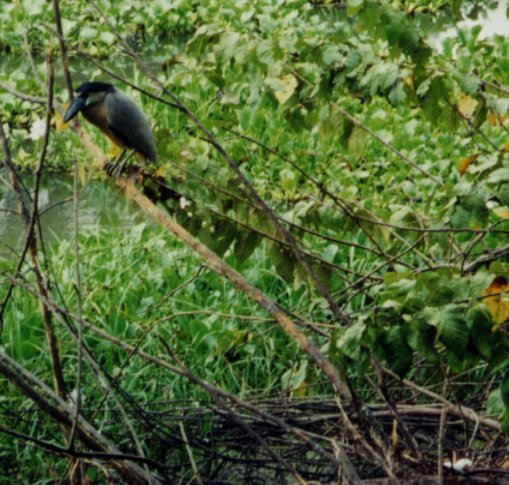 |
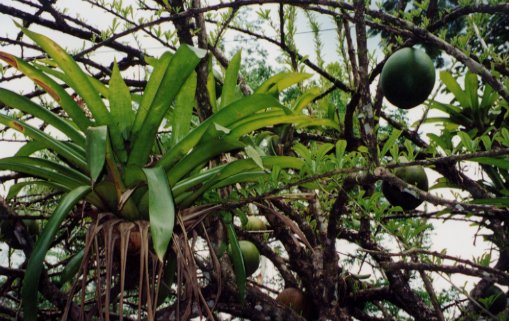 |
A large bromeliad. Carol thinks the round things are breadfruit. Anyone know? Scott? |
| Butterflies with these patterns on the outside of their wings and bright blue on the inside. | 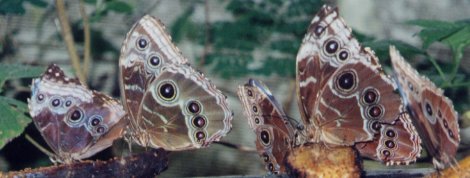 |